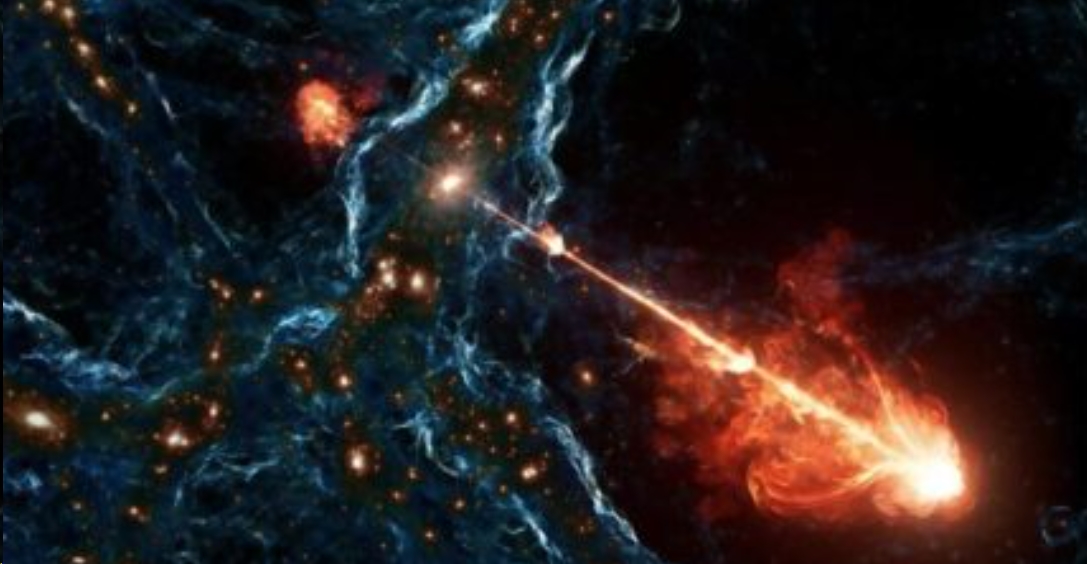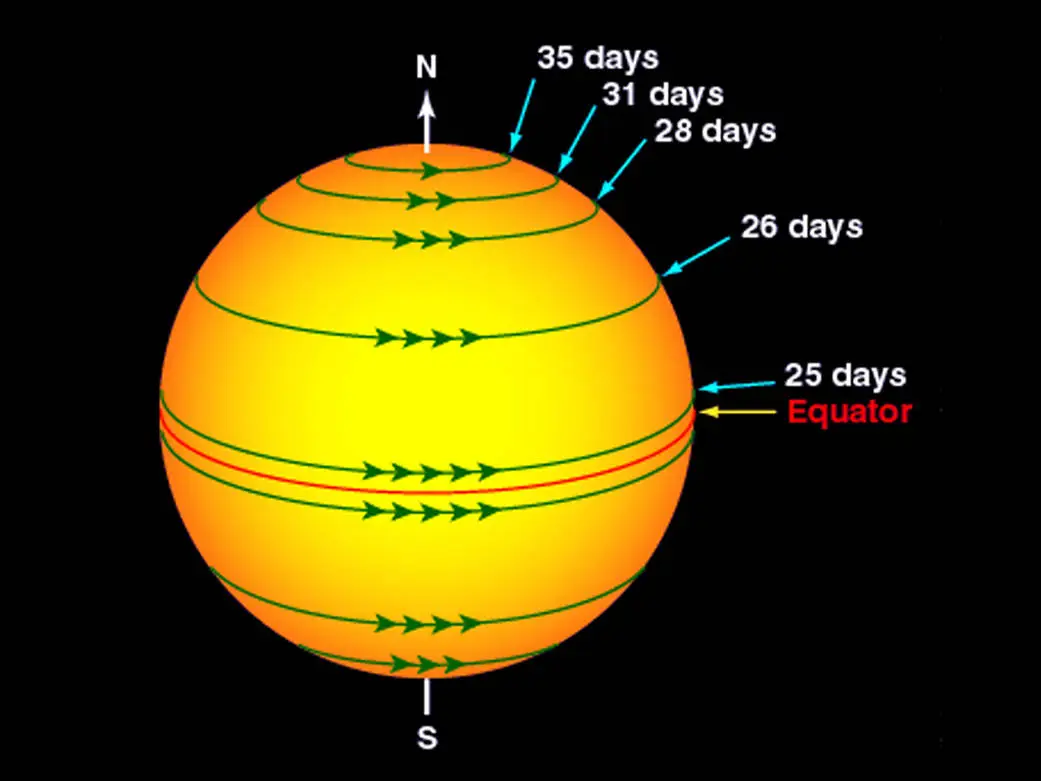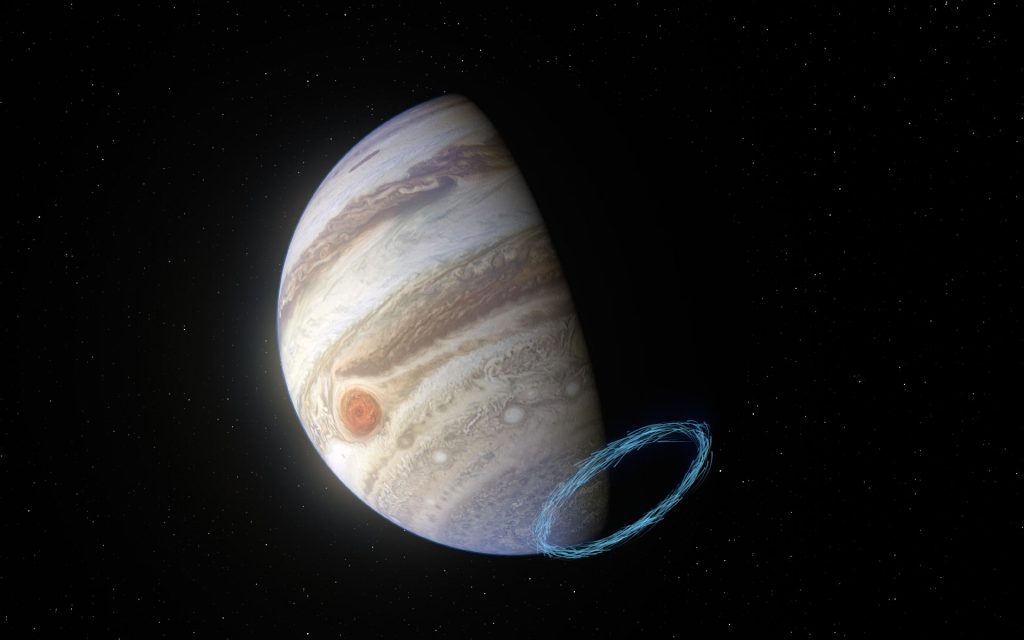|
DIPOLE MOMENTS The ionized rotating cores of stars and planets transform the momentum of moving charges into dipole moments and the sum of moments is captured by their fields which increases the momentum of orbiting ions in the direction of core rotation powering super-rotation of atmospheres and high velocity ion electric ring currents ion electric ring currents around the equatorial planes of stars and planets. Atmospheric super-rotation is a phenomenon where a planet’s atmosphere rotates faster than the planet’s rotation. This is observed in the atmosphere of Venus, Titan, Jupiter, and Saturn. Venus exhibits the most extreme super-rotation, with its atmosphere circling the planet in 4 Earth days, much faster than its planet’s own rotation in 243 earth days.
The ionized, rotating cores of black holes transform the momentum of moving charges into dipole moments and sum of moments is captured by the black hole field which increases the momentum of high velocity ionized ring currents trapped in counter flowing current tubes of electrons, transforming the momentum of spiralling charges into moments which increases the attractive force powering the currents directly as the amperage. ions, powering ring currents of counter flowing ions and electrons which transform momentum of moving charges into moments and sum of moments into a field electrically attracting ions and electrons to opposite poles with a force which increases directly as the amperage of ring current ions.
Electron jets, powered by black holes and wormholes to opposite polarity universes, transform momentum of spiralling charges into moments, and sum of moments into a dipole field along the rotation axis attracting electrons in the current direction with forces which increases directly as the current amperage and powers intergalactic counterflowing currents of ionized gas and stardust.
Scientists identify incredibly powerful winds in Jupiter’s atmosphere. The team used molecules exhumed by the 1994 impact of comet Shoemaker–Levy 9 to trace winds in excess of 900 miles per hour, opposite to core rotation, near Jupiter’s poles.
Jupiter’s ionized core transforms the momentum of moving charges into dipole moments. The sum of moments captured by Jupiter’s field increases the momentum of orbiting ions in the direction of core rotation powering atmospheric super-rotation and counterflowing currents around the poles, electrified by field lines grounded in the auroral ovals which capture electrons from the solar wind. Orbital momentum is the product of the mass, velocity and orbital distance of an orbiting body which balances gravity between the orbiting and orbited body. Increasing the mass or velocity has a multiplier effect on the momentum of an orbiting body, which increases the orbital distance and decreases gravity as the orbital distance increases. The magnetosphere of Jupiter sweeps up ionized gases and dust from Io’s thin atmosphere at a rate of 1 tonne per second. This material is mostly ionized sulfur, oxygen, chlorine and sodium chloride dust. The plasma torus rotates with a velocity of about 74 km/sec. Io orbits Jupiter with a velocity of 17 km/sec and the plasma torus flows past Io with a relative velocity of 57 km/sec. Dipole moments captured by Jupiter’s field powers the high velocity ring current of heavy ions around Io’s orbital path. The current is blocked by Io’s mass, reducing the velocity of orbiting ions and increases Io’s orbital velocity, orbital momentum and orbital distance. Porphyrion’s jets are huge streams of ions and electrons with a power that is equivalent to trillions of suns. Each jet covers a distance equivalent to 140 Milky Way galaxies. Electron jets from wormholes induce monopole charge in the same instant and repelling forces between like charges on field lines of twin phase electrons which spiral anticlockwise into matter universes and clockwise into antimatter universes. Electron jets transform the angular momentum of spiralling charges into moments and sum of moments into a field along the rotation axis, attracting electrons in the current direction with a force which increases directly as the current amperage. |
Atoms are electrons and positrons 2d & 3d photon quanta with opposite and like polarity to the fields of stars and planets





